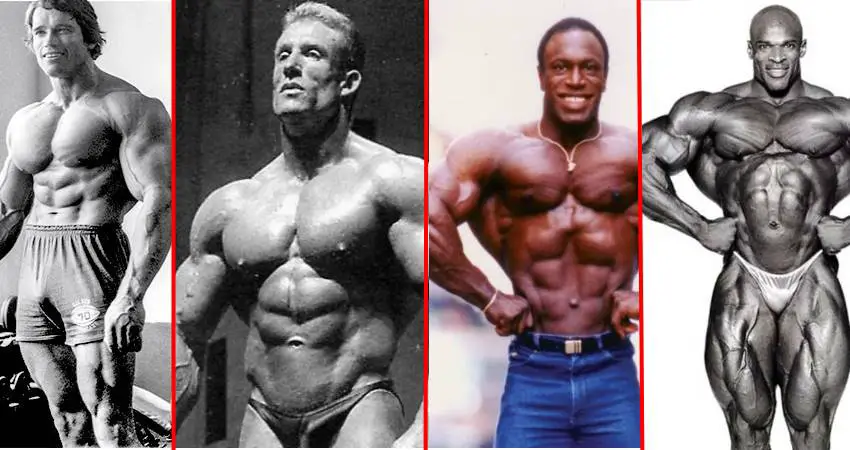As we all know, bodybuilding can be both beneficial and downright damaging to one’s health. When we read about the frequent hospital stays of top level bodybuilders, the question that naturally arises is whether injury is a no-escape scenario for all heavy lifters. Is it even possible for a high-level bodybuilder to stay healthy in the long run? In this article, we will take a look at some of the highest-ranking pro’s in the game to find the answer to that question and perhaps provide you with some guidance on how to avoid serious training injuries in your own life.
-
Dorian Yates
Six-time Mr. Olympia Dorian Yates also had his share of grave injuries, including tears of his left shoulder ligament, right biceps, left triceps and both thighs. To top it off, he also suffered a stomach rupture as an indirect result of his many injuries. On the other hand, Yates’s achievements include 425-pound incline presses and 660-pound hack squats.
His workouts revolved around the principle of high intensity – he usually performed few sets but always aimed at absolute failure and beyond. Perhaps this great bodybuilder trained too heavy for too long, but he claims he couldn’t have it done differently. He saw bodybuilding as a way to push his body to its ultimate limits and that’s exactly what he did, time after time, scoring a great number of titles and awards along the way, until his body couldn’t take it anymore.
In the end, his intense approach to training was what caused him to quit competing altogether, but it’s also what made him a legend in the discipline. We doubt that he would have achieved the same level of success if he took it easier.
-
Arnold Schwarzenegger
Schwarzenegger began by competing in Olympic lifting and powerlifting and in 1968, he deadlifted nearly 700 pounds. During his heyday in the 70’s he trained all body parts three times per week and frequently worked out twice daily, employing classic movements and supersets with reps in the 10-20 range to build his legendary physique.
He describes supersets as the most effective way to structure a workout and speed up progress without focusing on the amount of weight. In the long run, his high-frequency approach to training is what prevented him from going too heavy and reduced his risk of injury. Although his high-frequency, high-volume methodology is one of the safest around, Schwarzenegger has had hip replacement surgery and two shoulder surgeries after his retirement as a competitive bodybuilder.
The only problem with his way of building muscle is that it’s very time-consuming and not everyone can allow to spend so much time in the gym on a daily basis, which makes it a lot less practical than other popular regimes.
-
Ronnie Coleman
Eight-time Mr. Olympia and perhaps one of the greatest and strongest bodybuilders of all time, Ronnie Coleman, is now 52 years old and claims that if he could go back in time, he would have trained even harder, even though his heavy lifting routine came with a high price – he has had seven surgeries since 2007, mostly as a result of decompressed spinal disks.
Coleman trained every body part twice per week and usually trained twice daily. Although his workouts were just a bit more than typical, he separated himself from other bodybuilders with the stunning progress he was able to make in terms of weight and reps over the course of a decade. His 2,300-pound leg presses, 540-pound T-bar rows and 700-pound shrugs are nothing less than impressive.
The great bodybuilder was aware of the risks of injury his training regime imposed on his body and made sure to always wrap his joints and wear a belt, but in the end he wasn’t able to protect his spine from the accumulated stress.
-
Lee Haney
Haney retired at 31 after becoming eight-time Mr. Olympia winner. The most distinguishing thing about this bodybuilding giant is perhaps the fact that he remained injury-free all through his amazing career. He succeeded at avoiding all common injuries and traumas that have haunted great bodybuilders since the dawn of time with his famous maxim “stimulate, don’t annihilate”.
Haney never focused on lifting colossal amount of weight. Instead, he emphasized optimal muscle contraction and used the lower rep range, making sure to score all-perfect reps on every set. Although this prevented him from reaching his absolute maximum, it also kept his body healthy, pain-free and vital. In that context, Haney is a true inspiration for bodybuilders who aspire to become great without risking their health.
In conclusion
If asked is employing Coleman’s approach to training worth the eight Olympia titles he won, different bodybuilders would give different answers. Ultimately, it all comes down to your own set of goals and priorities. Some guys want to stay injury-free at all costs, while others would risk everything to get on the top or to achieve something no one has ever done.
That being said, there is a lot to be learned from the legends of bodybuilding in terms of training and avoiding injury and we could all use parts of their methodologies to get better results from our efforts. After all, if you want to be a great bodybuilder, you need to train like one. And if health comes first for you, put in the effort to make your routine as safe as possible.
The most important thing to know is that you can become great without seriously damaging your body, as Haney has shown. It might take longer, or demand a greater sacrifice, but it can be done. No matter which approach you choose, just keep in mind that when you’re old, the size of your muscles won’t matter to you anymore, but the health of your spine and joints definitely will. Good luck!





